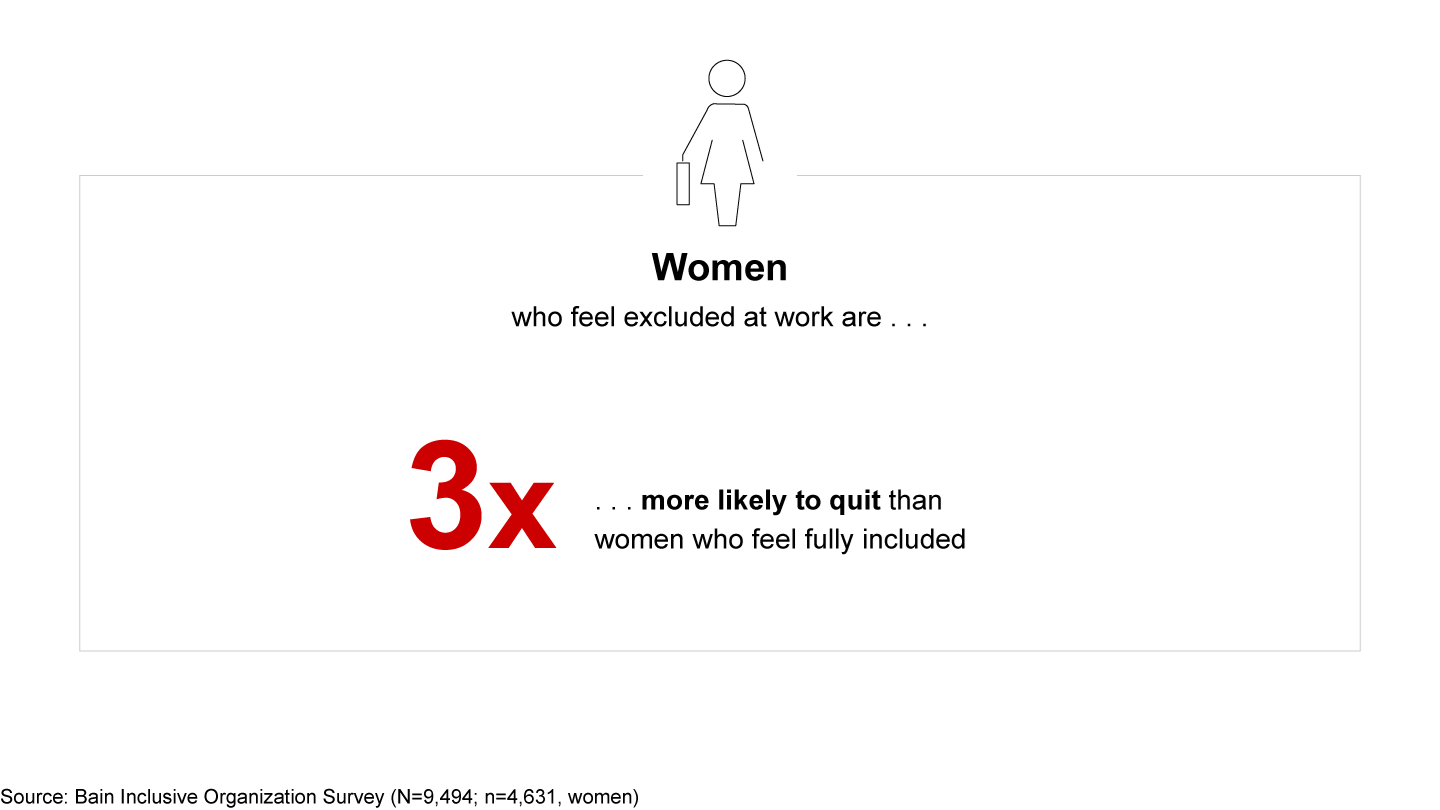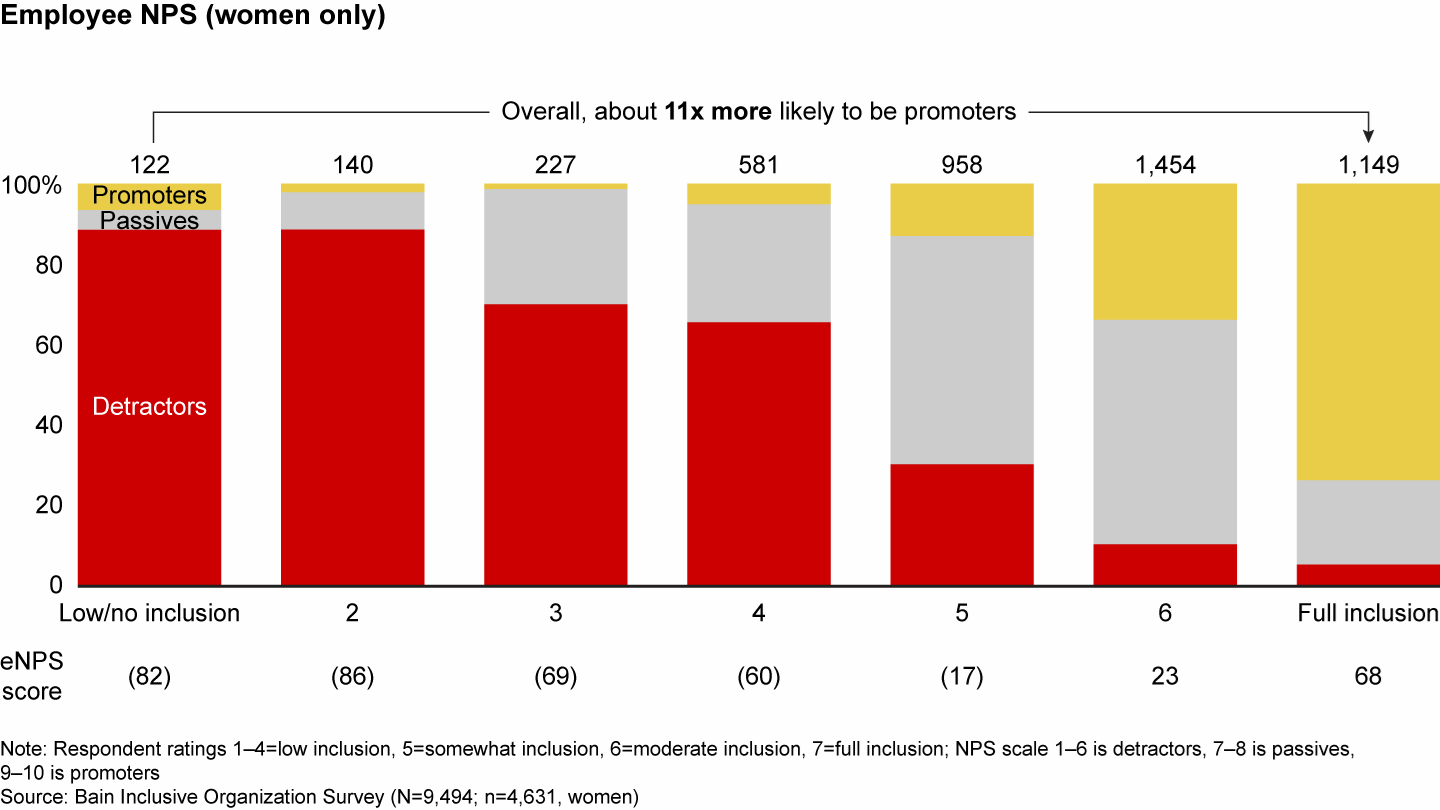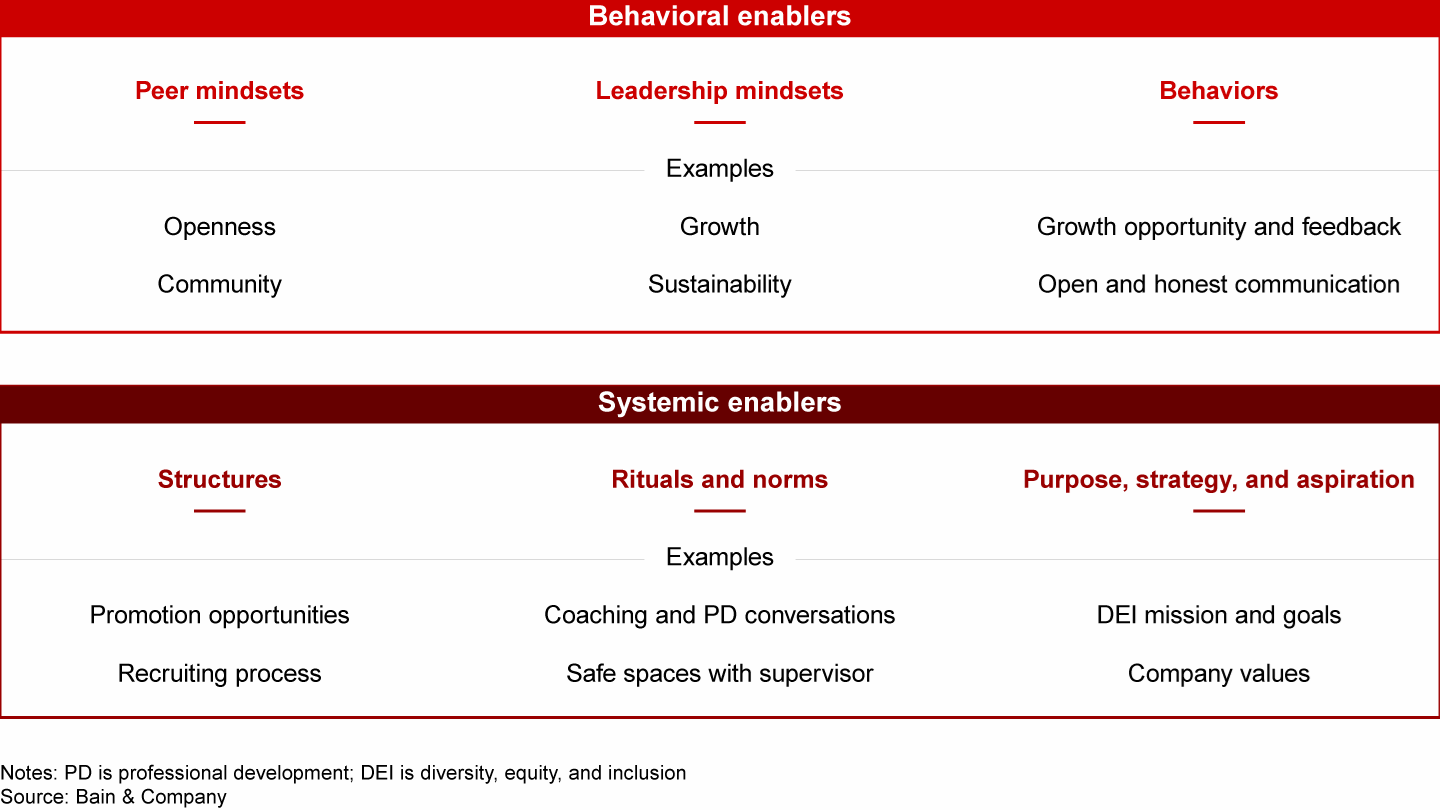記事

As we celebrate Women’s History Month, it is inspiring to see the progress women have made in the workplace—last year, for example, the number (and diversity) of women in the C-suites of Fortune 500 companies reached an all-time high. Yet we are still far from closing the gender gap or achieving gender equity in business. Women remain highly underrepresented in corporate leadership. The pandemic has put a premium on resilience, but we have asked for more of that resilience from women—especially when it comes to the burden of the “double shift” of childcare and home responsibilities. Throughout the pandemic, the quit rate for women has been significantly higher than for men, driven by a wide variety of factors.
Such data, among many other points, supports what so many of us have experienced ourselves or seen in our fellow employees—women are burned out, more so than men on average. It hardly needs saying that this is a big problem for organizations. We believe that creating an inclusive workplace for women is a critical starting point, and can make a meaningful difference in attracting and retaining women workers and enabling them to thrive.
For our recent study The Fabric of Belonging: How to Weave an Inclusive Culture, we interviewed or surveyed more than 4,500 women—in seven different countries and across all levels of their organizations—to learn about how they think and feel about inclusion in the workplace. One thing our research found is that women who feel excluded at work are 3 times more likely to quit than those who feel included (see Figure 1).
Inclusion plays a critical role in retaining women in the workforce


On the flip side, women who feel fully included are 11 times more likely to be promoters of their companies than those who do not—a key indicator of employee engagement (see Figure 2).
Inclusion plays a critical role in engagement—women who feel included are more likely to be promoters of their company


We also found that inclusion is important for recruiting women—over 65% of whom in our sample said that an inclusive environment is important in a new role—as well as for retaining them.
What makes women feel included?
Our research found that while the feeling of inclusion is fundamentally the same for all employees, the lived experience of inclusion is driven for various groups by a diverse variety of factors. So we tried to determine which of a wide range of organizational enablers of inclusion—which we broadly classify as “behavioral” and “systemic”—were most effective in making people feel included. For all employees, a wide range of enablers result in the experience and feeling of inclusion (see Figure 3).
For all employees, a wide range of enablers result in the experience and feeling of inclusion


Yet while every employee’s sense and experience of inclusion benefits from both behavioral and systemic enablers, the mix of effective enablers—what we might call the texture of inclusion—varies across groups. Thus, for example, while both systemic and behavioral enablers drive inclusion for women and men, behavioral enablers have a larger impact on inclusion for women than for men. (Specific behavioral enablers that increase inclusion for women—at least more than for men—include open and honest communications, growth opportunities with transparent feedback, and empathy.)
To understand the precise texture of inclusion for different people in an organization, however, it is necessary to take many different aspects of their identities into account. Another key finding from our research is that an intersectional lens—looking, for example, not only at gender but at other factors such as geography and race or ethnicity—helps identify with added precision which specific enablers can be used to increase feelings and experiences of inclusion for particular groups of people. Companies can use these different lenses to determine which specific enablers would most increase inclusion for women depending on where they live and work and to which racial or ethnic groups they belong (see interactive below). For example, for women in underrepresented racial groups in Europe, language that helps teams engage, addressing bad behaviors, and embracing different working styles are among the most effective means of increasing inclusion.
What can organizations do?
We realize that inclusion in the workplace is only one of many factors—including some outside the workplace altogether—influencing gender equity in the workplace. But our findings about the importance of inclusion for hiring, engaging, and retaining women employees indicate that it is an important factor. But fostering inclusion is deceptively difficult: There is no panacea, and every group has its own experiences and needs when it comes to inclusion.
And yet, there is a clear path for organizations to tackle that complexity.
First, begin at the top. The most successful change efforts begin with CEO-level commitments to improving inclusion and fostering gender equity. This includes spearheading the case for change—ensuring that the leadership team, and eventually the whole organization, understands the value to be unlocked by advancing gender equity. Ultimately, the CEO must elicit commitment from everyone in the organization—not just women.
Second, understand intersectionality and apply intersectional lenses to data about your organization to reveal what actions will most effectively increase inclusion for the various groups within it—not just women as a whole, but specific groups of women viewed through additional intersectional lenses. Our data also shows that what people think will make them feel more included does not necessarily match what really improves their experiences. It is therefore important for organizations to gather data, listen to the stories, and incorporate the nuances to make sure they have a deep understanding of their organization’s women and the particular textures of inclusion for them.
Finally, focus on behaviors that increase inclusion for women employees generally: for example, daily interactions employees have with their supervisors during the period of their careers when they are crystallizing their aspirations—interactions (what we call “everyday moments of truth”) that can either build or erode their confidence. Recognize the value of growth opportunities and feedback for all—ensure you’re having the right conversations, training yourself and others to recognize biases, sponsoring women in your organization, and showing them clear career paths. Testing and learning are also key when dealing with behaviors that will take a long time to change.
Organizations can and should feel empowered to build on this moment of momentum when gender equity is advancing and yet still falls short of the goal. They can work to understand what will make a difference, and slowly but surely make changes in their individual organizations—creating a “virtuous cycle” as they succeed in hiring and retaining more women, thus motivating other women to join them. Using the progress made to date as momentum for the path ahead, they can increase inclusion for their own women employees that, in turn, will help create broader gender equity in society.